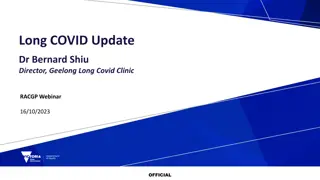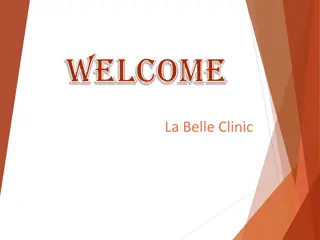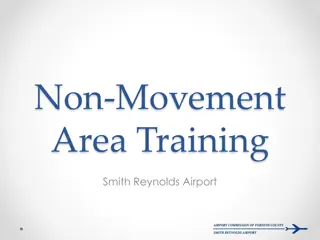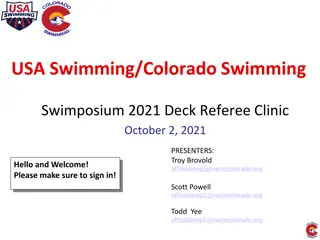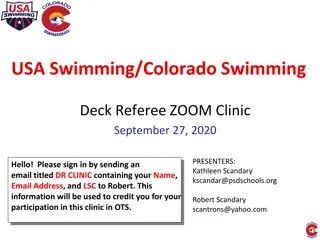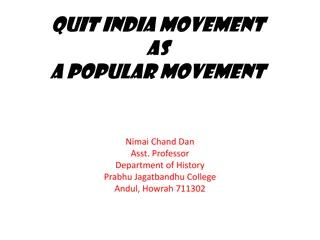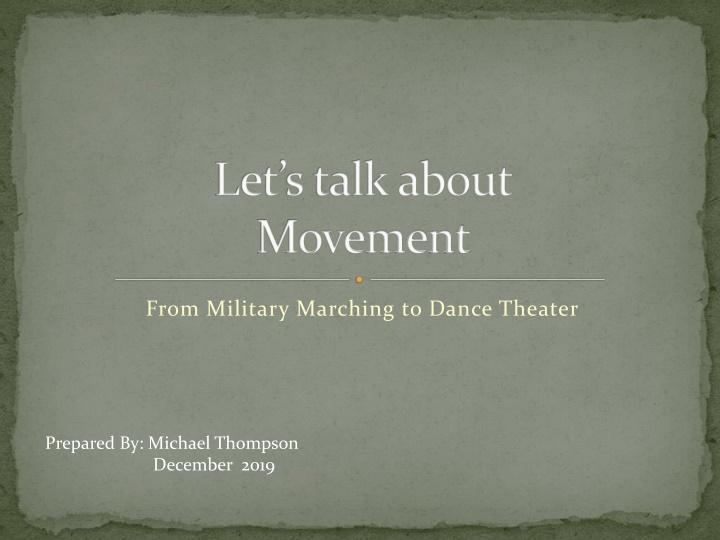
Movement Principles: From Military Marching to Dance Theater
Explore the evolution of movement from rigid military marching to expressive dance theater, delving into the fundamental principles such as centering, gravity, balance, posture, gesture, rhythm, space, and breathing for a deeper understanding of physical expression and performance.
Download Presentation

Please find below an Image/Link to download the presentation.
The content on the website is provided AS IS for your information and personal use only. It may not be sold, licensed, or shared on other websites without obtaining consent from the author. If you encounter any issues during the download, it is possible that the publisher has removed the file from their server.
You are allowed to download the files provided on this website for personal or commercial use, subject to the condition that they are used lawfully. All files are the property of their respective owners.
The content on the website is provided AS IS for your information and personal use only. It may not be sold, licensed, or shared on other websites without obtaining consent from the author.
E N D
Presentation Transcript
Lets talk about Movement From Military Marching to Dance Theater Prepared By: Michael Thompson December 2019
What is Movement An act of changing physical location or position or of having this changed.
In the Beginning Once upon a time, in our beginning, we only marched. The body was held erect; the face showed NO emotion or expression, we took pride in high leg-lifts' and snappy left-to-the rear moves. We were heightened military in style.
Evolution As the guards began to broaden the complexity of their marching skills, we grew to learn that we might have to take a little more realistic view of what could be done We saw more skills being presented more than just MARCHING AND MANEUVERING More expressive and multi-dimensional choreography starts to be introduced.
Movement Principles There are eight elements that are the most important principles to understand.
Movement Principles CENTERING- Centering or maintaining a sense of your own body center, holds you together as you move. It allows you to move freely and gracefully. It is your ability to move, to hold, to organize yourself around your own physical body center. GRAVITY- Gravity is the force that holds you down on the earth. You must learn to work with this because it inhibits movement BALANCE- Balance helps you to work with gravity and is MORE than the ability to stand on one leg. You must learn to maintain an inner balance of the whole body. It is a tension of mutual support among all the parts that brings the whole together in a new way
Movement Principles POSTURE- Posture or body alignment is closely linked with Centering, gravity and balance and will improve automatically as you develop the first three elements. It is important to change your perception of your body for there is a wide discrepancy between what FEELS GOOD and what LOOKS RIGHT. GESTURE- Gesture involves using your body as an expressive instrument to communicate feelings and ideas in patterns of movement. RHYTHM Fluctuation or variation marked by the regular recurrence or natural flow of related elements.
Movement Principles SPACE- Moving in space requires that you be aware of all the space around you. BREATHING- Breathing well is crucial to movement, not only to bring more oxygen to the body but also to give your movement more fluency and harmony
Training and Technique The actual method behind technical achievement, such as walking, sitting, jumping, etc.- an acquired technical skill teamed from our earliest days. EVERY movement skill involves basic PRINCIPLES of movement.
Training and Technique There are certain skills common to the basketball player, the gymnast, the diver and the dancer. Each has refined his/her body to accomplish a SPECIFIC function.
Dynamic Efforts The physical/muscular changes within the body that brings "dynamics" to the look of any move These efforts are in the category of changes of SPACE, TIME, WEIGHT & FLOW. NOTE this is referred to Dynamic Range within the criteria reference.
THE WINTER GUARD PERFORMER combines both of these aspects in the demonstration of heightened physical skill and a wordless relay of expressive/dynamic information that tells a story or demonstrates an attitude or a feeling. Body principles and expressive skills are called for in traditional pedestrian movement as well as all forms of dance.
Key Judges Observations. Stylistic diversity is to be encouraged with ALL choices given equal potential for success. No one SINGLE effort is rewarded more heavily than a culmination of skills OVER TIME. The movement judge is also looking at the equipment and it s impact and relationship on the body. Considerations in staging responsibilities are acknowledged. Compatibility and Achievement.
Questions What skills do you expect to see at the Novice level and what would be too advanced What skills and how much variety will you be looking for in the Jr. Class How do you help your students understand their arm placement without mirrors Best methods in teaching students struggling to understand grace and poise. Especially with limited rehearsal time and dance resources How much does facial expression affect movement judging
Questions Benefit to have movement only feature compared to a movement paired with equipment. Benefit for a movement feature quantity vs quality. How much weight does a solo performer/dancer carry


